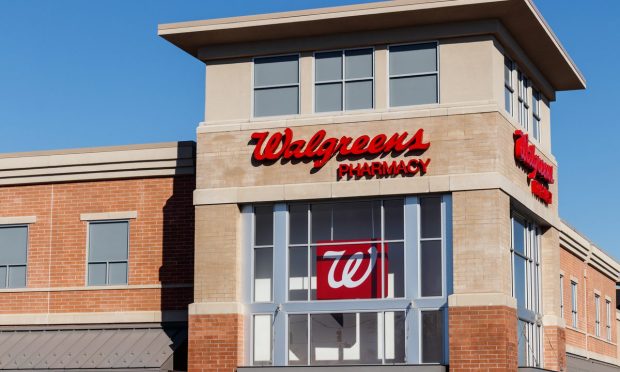Walgreens Looks to Healthcare and Digital for Growth

With COVID-19 vaccinations and urgent care visits dropping through spring as infection fears faded, Big Pharmacy is looking to get back on track with expansion plans, a recovery in prescriptions and sales of wellness products, and more access to primary care via growing networks of retail care clinics being pursued by all the major chains.
Walgreens Boots Alliance (WBA) will remain allies following news earlier this week that Walgreens had decided to ditch plans to sell the U.K.-based chain of roughly 2,200 locations, citing market conditions and lack of an offer “that adequately reflects the high potential value of Boots,” the company said.
On its third-quarter 2022 earnings call with analysts on Thursday (June 30), Walgreens CEO Rosalind Brewer commented on depressed prescription volumes, saying, “Historically, we have seen stable script trends in a downturn, which should be aided today by the ongoing return to normalized health care utilization levels. Additionally, we see upside at Walgreens as we address staffing challenges at stores to enable a return to normal operating hours.”
The drop off in vaccination reimbursements also put a dent in the pharmacy numbers.
Brewer noted that the My Walgreens subscribe and save plan “is approaching a big milestone of 100 million customers,” adding, “We are focusing labor investments to return about 3,000 stores to normal operating hours, which I expect will accelerate script volume recovery as we head into fiscal 2023.”
WBA announced ongoing expansion of its Village MD partnership in late April, planning to add 10 new Village Medical at Walgreens primary care locations in Massachusetts by next year. On the earnings call Brewer said, “Our largest partnership, Village MD, continues its rollout of collocated clinics with 120 now open, on pace towards 200 by the end of 2022.”
Noting, “Village MD is in 22 markets today with over 1.6 million patients,” she added that Shields Health Solutions, in which WBA invested a reported $970 million last October, “continues to rapidly expand its platform, including new deals with three significant health systems and the launch of Boston Children’s pharmacy.”
See also: Walgreens’ Transformation Will Include Boots … For Now
Melding Physical and Virtual
For its part, CVS Health reported in May that vaccinations and related traffic to decline 70% from the same period in 2021, as the chain proceeded with store closings previously announced, while talking up gains in virtual health and primary care in new store formats.
Giving a sense of the changes, CNBC reported that CVS CEO Karen Lynch said “the company supported 10,000 virtual mental health visits in 2019. That soared to 10 million virtual visits for mental health in 2021.”
Read more: CVS Health Debuts Virtual Primary Care
Meanwhile, Walmart Health sees the future of healthcare as increasingly virtual, partnering with automated patient intake and charting firm Gyant on expanding virtual health services.
In a Tuesday (June 28) Gyant announcement, the company said its “automated patient intake and charting tool, Intake, will be launched with Walmart Health Virtual Care, formerly known as MeMD. GYANT’s web-enabled clinical assessment solution will begin rolling out this month and will be available to all Walmart Health Virtual Care member groups using virtual urgent care services by the end of the year.
Gyant said, “Telehealth utilization has stabilized at 38x pre-pandemic rates. With more patients than ever seeking virtual care, it is crucial to ensure that services scale to meet demand,” with GYANT Co-founder and CEO Stefan Behrens adding, “This is a pivotal time for evolution in healthcare. Walmart Health Virtual Care is well-positioned in telehealth care, and we are excited not only to impact the care of more patients, but also to ensure that those patients benefit from a seamless and intuitive experience.”
See also: Retail Healthcare Gets a Shot in the Arm via Walmart Wellness Hub Subscription Options
